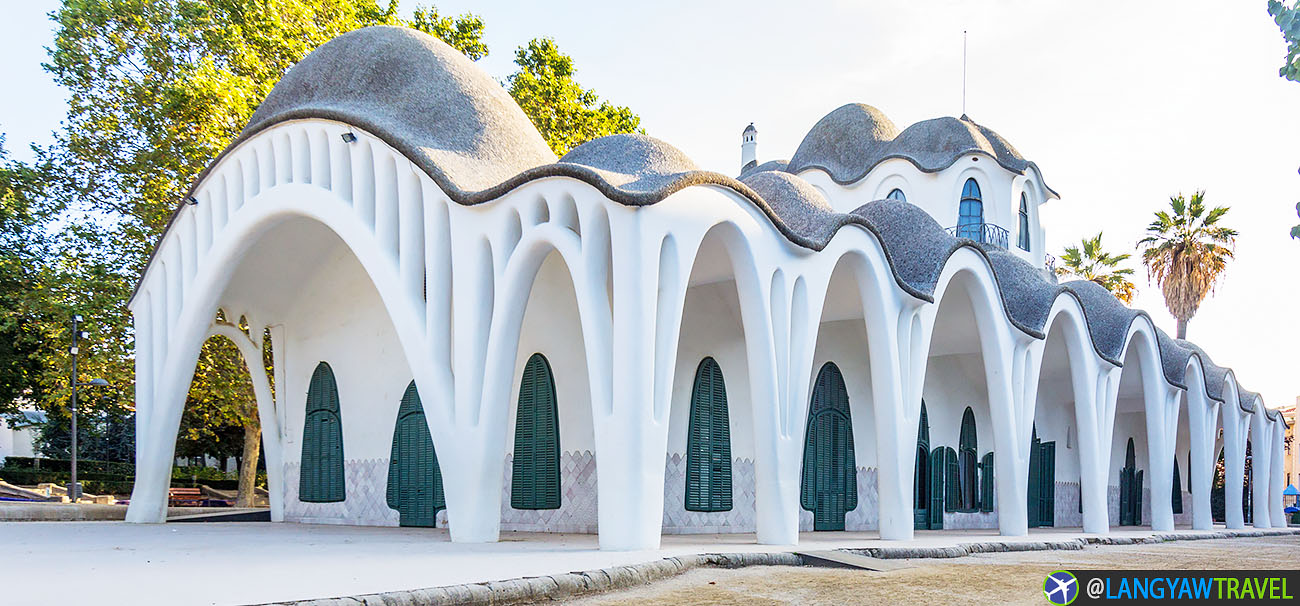Exploring around Terrassa is so worth your while with its rich history and Modernista architecture. What’s more, it’s just 27 kilometers by train from Barcelona.
I travelled to Barcelona in 2013 after a few days in France where my personal photography work, The New Cathedrals was exhibited during Photoquai in Paris. I was one of the featured photographers.
The reason was, at that time, my budget was not enough for a longer stay in Paris and a friend from Terrassa in Barcelona also invited me to visit him. It was in this Spanish province where I spent more days. Although I did visited Toulouse, Perpignan and Carcassonne in the south of France.
Terrassa was my base during my entire stay in Barcelona province and just took the train to and from Barcelona, the capital city.
Walking around Terrassa
I spent my first day exploring the city by walking around Terrassa. A farming and wool-producing town, it became the hub of the textile industry during the industrial revolution. Today, Terrassa’s museums preserve its industrial past. It’s Modernista architecture is interesting and a must see.

Estacio del Nord
If you’re visiting, the Estacio del Nord is probably the first and last point that you’ll be in Terrassa. The arrival of trains in the 19th century spurred the textile industry here. An earlier structure was built in 1856 while the current station was built in 1899.
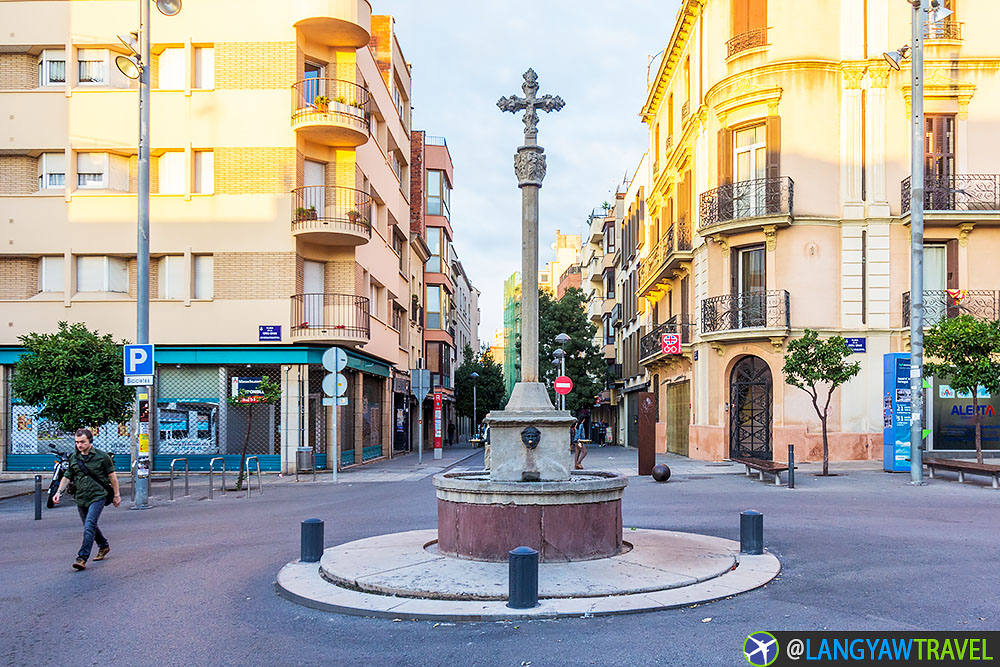
Creu gran
Located at the Plaça de la Creu Gran, this cross marked the limits of Terrassa and Sant Pere in the middle of the 18th century. It’s mounted on top of a fountain. The original cross was made sometime in the 14th-15th centuries but is now at the Terrassa Museum at the Vallparadis Castle. This one is a cement reproducton.
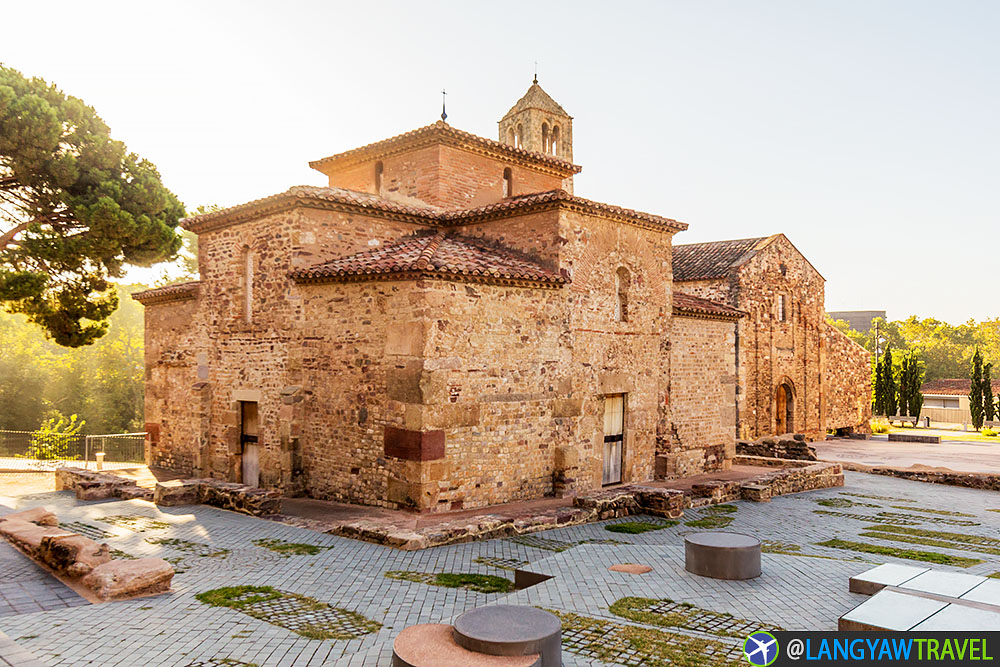
The Churches of Sant Pere
The Sant Pere church complex (also, the Episcopal complex of Egara) dates back to the Visigoth era in the 5th-8th centuries. The area has three Romanesque style churches: San Pedro, Santa Maria and San Miguel which took a very long time to finish. The structures took its current form between the 11th and 12th centuries. The complex was declared a National Monument in 1931 and a Bien de interes cultural landmark in 1985. This forms one of six sections of Terrassa Museum.
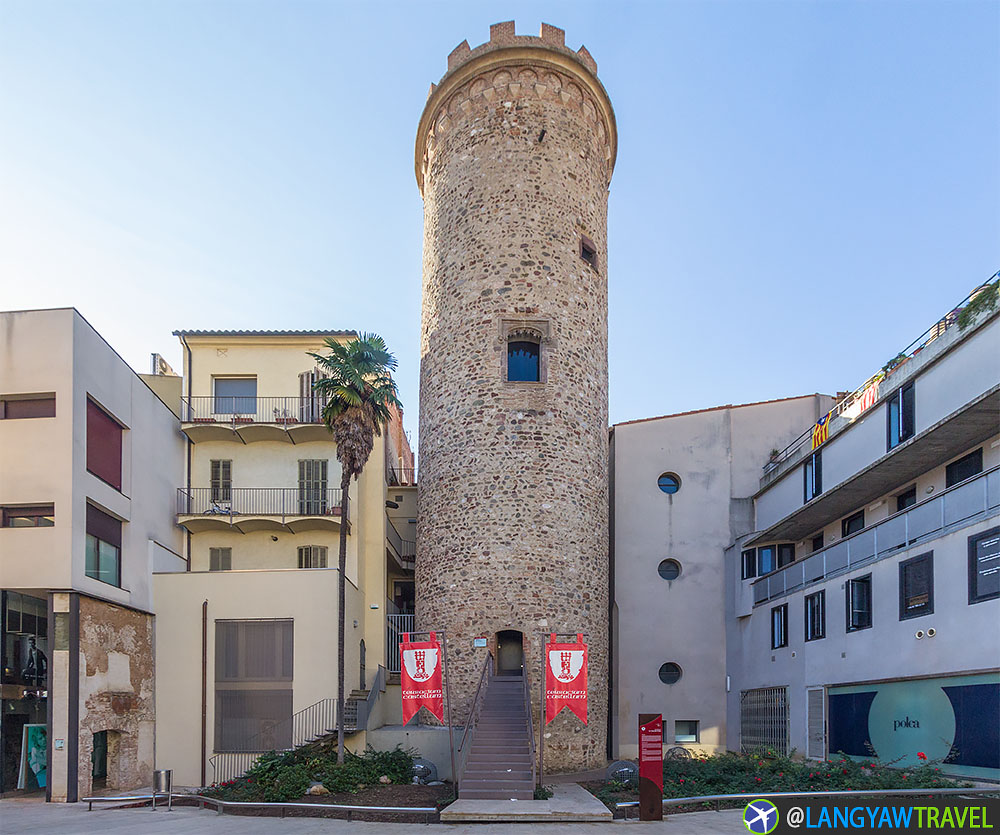
La Torre del Palau
One of the must visit sites in Terrassa is La Torre del Palau. It is what remains of the Castell Palau de Terrassa, a castle-palace first documented in 1016. The building was demolished in 1891. The tower has a height of 27 meters and is one of the sections of Terrassa Museum. One can visit the structure and guided tours are also available.
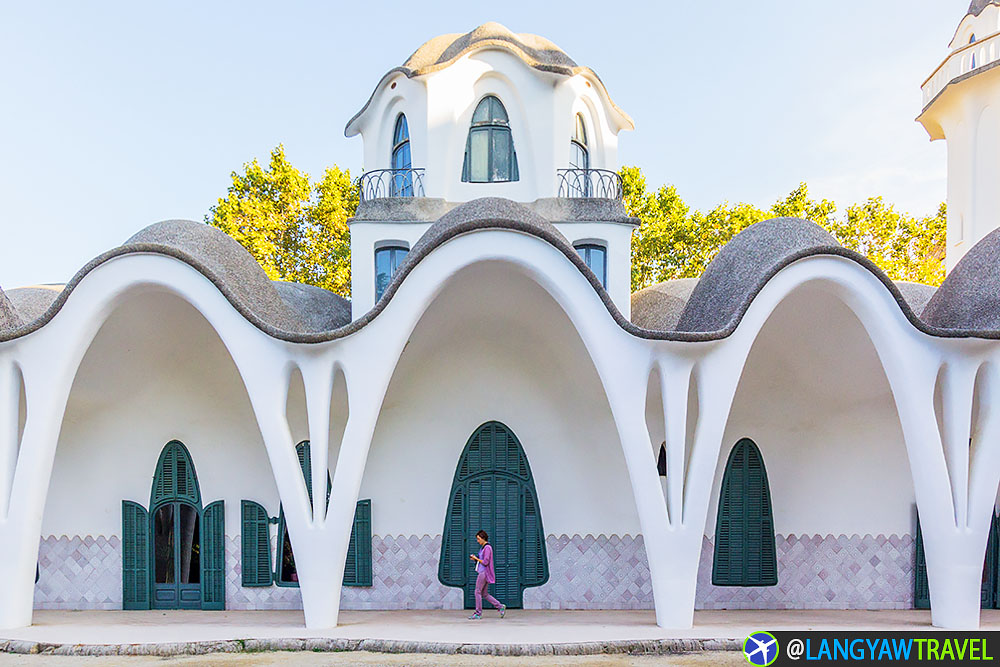
Masia Freixa
This was number one in my must visit list and when I had the time to roam around Terrassa, the Masia Freixa was the first one I went to. It was originally planned as a textile factory but its owner, Catalan industrialist, Josep Freixa converted it into a residence. Lluis Muncunill, Catalan architect, designed the Masia Freixa, built between 1907-1910. The property has a Romantic influenced garden, considered one of the most representative gardens in Terrassa in the early 20th century.
Today, its the office of the Municipal Tourism Service and the local Ombudsman. There is a proposal to turn this into a gastronomic place.
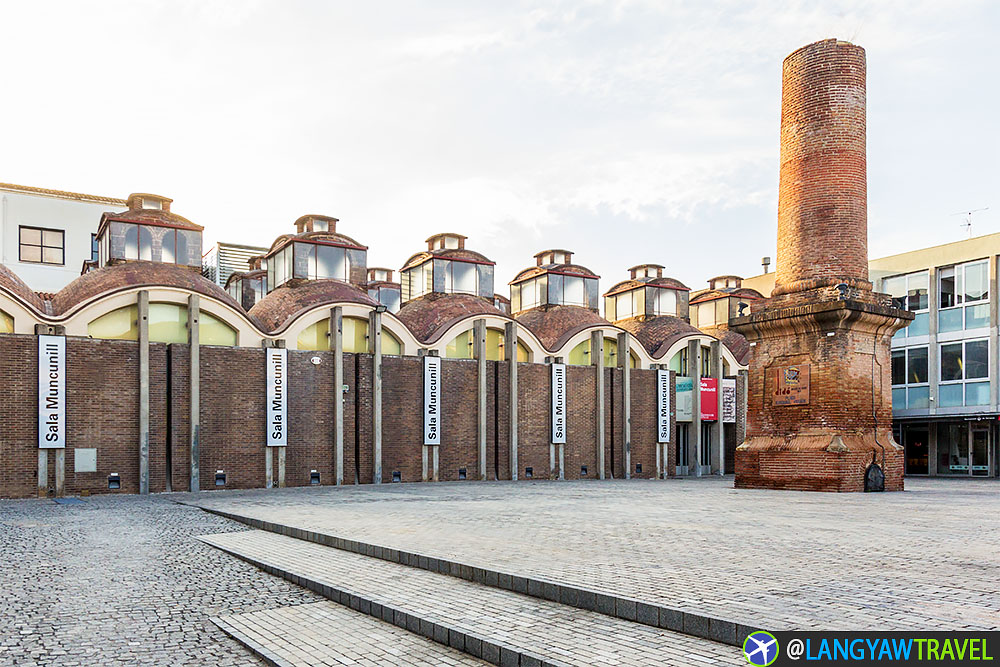
Sala Muncunill
An art gallery, Sala Muncunill is known for its extensive exhibitions and visual arts program housed in Vapor Amat, a former dye factory, . It is one of two exhibition spaces dedicated to contemporary artistic practices. Lluis Muncunill designed the factory and built in 1908.
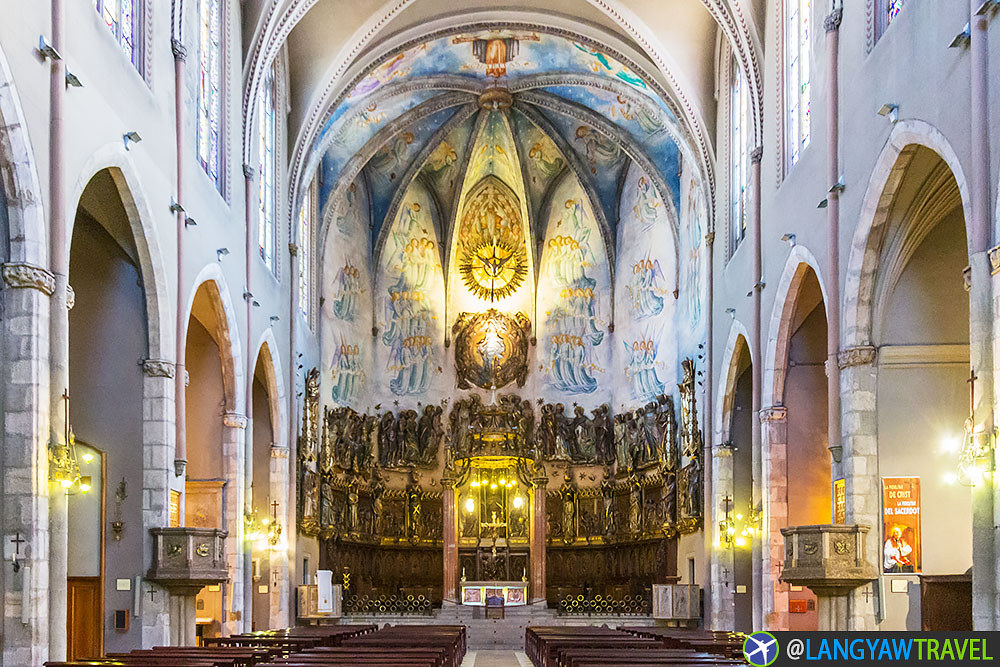
Catedral del Sant Esperit
The Terrassa Cathedral of the Holy Spirit in Plaça Vella is a neogothic style church and since 2002, has been part of the Cultural Heritage of Catalonia. Construction of the edifice started in the middle of the 16th century and became a parish church in 1601. Since then, it has undergone several renovations. It became a minor basilica in 1951.
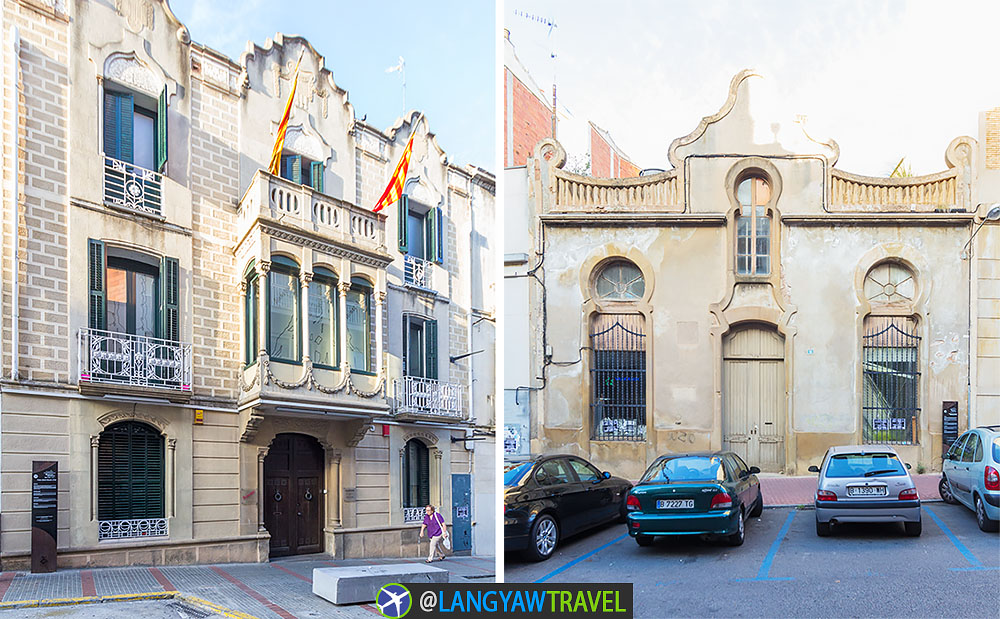
Notable architecture in Terrassa
Both Anton Gaudi and Lluis Domenech i Montaner influenced several Catalan architects who designed several structures in the city. And if you love architecture, walking around Terrassa is one of the best things you can do. Fine examples of the Modernista architecture (early 20th century) include the following:
- Magatzem Corcoroy, formerly a textile warehouse, pictured above
- Mercat de la Independencia, the city’s marketplace
- Vapor Aymerich, Amat i Jover, a series of textile factories (Vapor Amat picture above)
- Masia Freixa, pictured above
- Gran Casino de Foment
- Casa Alegre de Sagrera
- and many more warehouses, factories, houses and buildings
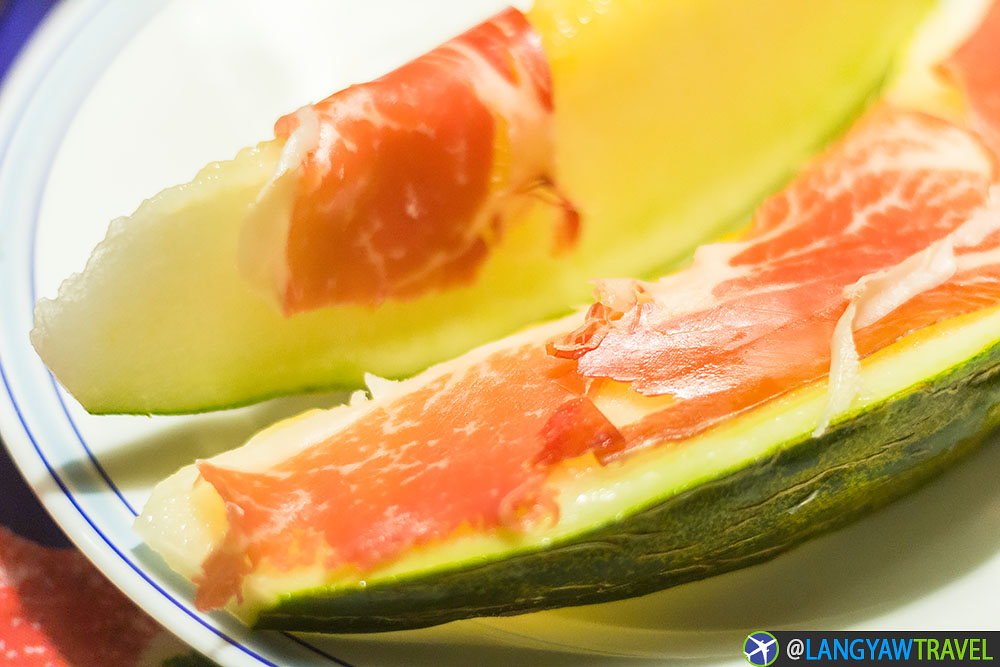
I wasn’t able to try Terrassa food as much as I want as I ate at my friend’s house. Except one time when we dropped by a small cafe before heading to Sant Pere. There, we had some bread topped with slices of tomatoes and olive oil. But one dish that I really enjoyed in Terrassa was eating this melon con jamon serrano, melon slices topped with serrano ham! I love the combination of sweet and salty. Additionally, the contrast between succulent and dry made it interesting. As a matter of fact, this was one of my memorable foods there. Simple, yet delicious, and of course, figs which I first tasted in Paris, and some cherimoyas that my friend Eduard bought.

Well, after a long day’s walk around Terrassa, its just fitting to take a seat at one of the benches at Plaça Vella or at a cafe to rest one’s feet and watch people.
If you want a more less hectic and less touristy city, exploring around Terrassa is highly recommended.



